Willamette National Forest
- January 30, 2024
- 0 comment
Nestled in the heart of Oregon, the Willamette National Forest is a sprawling expanse of natural beauty that stretches over 1.6 million acres. Encompassing a significant portion of the western Cascade Range, the forest is renowned for its stunning landscapes, ranging from lush, dense woodlands to rugged mountain peaks. Its geographical diversity offers a sanctuary not only for wildlife but also for nature enthusiasts seeking solace or adventure in its vast wilderness. The forest’s boundaries are home to some of Oregon’s most iconic natural features, including the picturesque McKenzie River, the majestic Mount Jefferson, and the serene Waldo Lake, one of the purest natural lakes in the world.
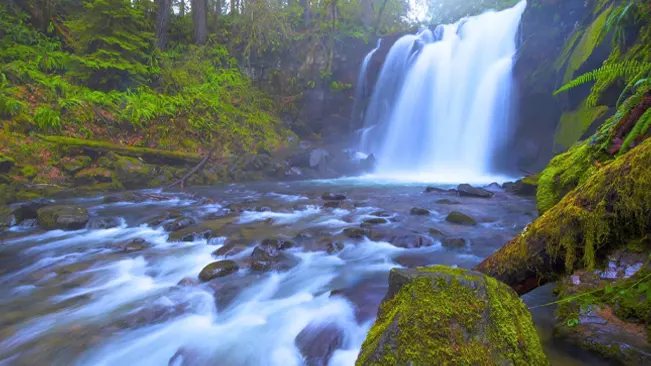
The significance of the Willamette National Forest extends beyond its scenic beauty and recreational opportunities. It plays a crucial role in environmental conservation, acting as a vital habitat for an array of wildlife, including endangered species such as the northern spotted owl and the Chinook salmon. The forest’s diverse ecosystems support a rich tapestry of flora and fauna, contributing to Oregon’s biodiversity. Moreover, the Willamette National Forest is an essential watershed, providing clean drinking water to the surrounding communities and supporting the health of the region’s rivers and streams. Its management is a testament to the balance between preserving natural resources and allowing for sustainable recreational and commercial use, making it a pivotal area for conservation efforts and environmental education.
History of Willamette National Forest
The formation of the Willamette National Forest is a story that stretches back millions of years, shaped by volcanic activity, glacial movements, and the natural succession of ecosystems. Established in 1933, the forest was created through the consolidation of several smaller reserves, a testament to the growing recognition of the need for sustainable forest management. The landscape itself, with its towering peaks and fertile valleys, has been sculpted over time by the forces of nature, from the ancient eruptions of the Cascade volcanoes to the meandering paths of its rivers, carving out the rich and diverse terrain we see today.
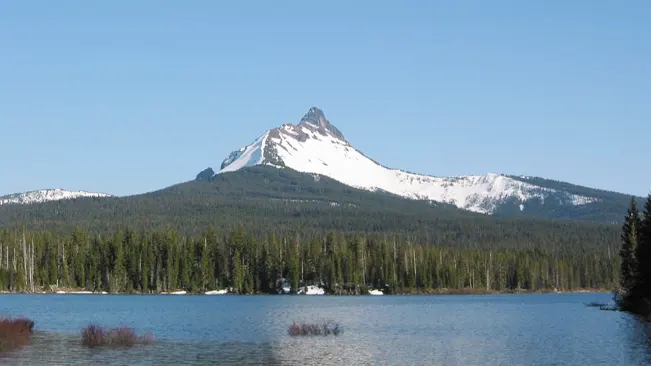
The cultural and historical tapestry of the Willamette National Forest is rich and multifaceted, woven through with the narratives of indigenous peoples and later, settlers. Long before European exploration, Native American tribes such as the Molalla, Kalapuya, and Warm Springs utilized the land, drawing on its abundant resources for sustenance, shelter, and spiritual practices. These lands hold countless stories, from ancient hunting grounds to sacred sites, reflecting a deep connection to the environment. The arrival of European settlers in the 19th century marked a new chapter, bringing with them logging, mining, and farming, significantly altering the landscape and its traditional uses.
Location of Willamette National Forest
The Willamette National Forest is located in the western part of Oregon, United States, nestled along the western slopes of the Cascade Range. Spanning over 1.6 million acres, it stretches from the city of Eugene in the south to the Columbia River Gorge in the north, covering a diverse landscape that includes parts of Lane, Linn, Marion, and Clackamas counties.
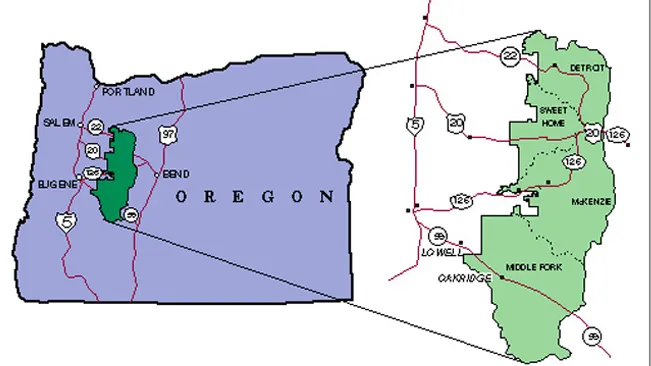
This vast forest is bordered by the Mount Hood National Forest to the north and the Umpqua National Forest to the south. Major highways such as U.S. Route 20 and Oregon Route 126 provide access to various parts of the forest, making it easily reachable from major cities like Portland and Salem. The forest’s central location in the Cascade Range offers a unique combination of volcanic landscapes, dense coniferous forests, and numerous rivers and lakes, making it a prominent feature of Oregon’s natural heritage.
Conservation and Recreation
The Willamette National Forest, the intertwining of conservation and recreation underscores the significance of both in preserving natural landscapes and enhancing human experience. Conservation efforts, such as habitat restoration for key species like the northern spotted owl and salmon, alongside invasive species management and adaptive fire management strategies, are crucial for maintaining the forest’s biodiversity and ecological health. These initiatives, coupled with reforestation projects, not only help in restoring natural habitats but also play a vital role in mitigating climate change impacts through carbon sequestration. Such measures ensure the forest’s resilience, safeguarding its rich ecosystems for future generations.
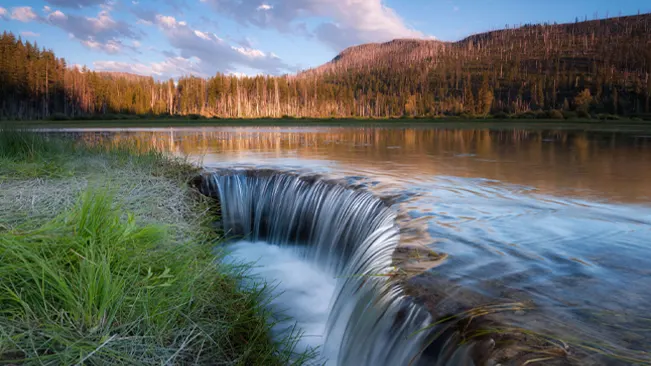
On the other hand, the forest’s vast array of recreational opportunities serves to deepen the human connection to nature, promoting physical and mental well-being. From the myriad of hiking trails that cater to all skill levels to the serene experiences of camping, fishing, and kayaking in its pristine waters, the forest offers a sanctuary for outdoor enthusiasts. Winter sports and unique activities like soaking in natural hot springs or taking scenic drives further enhance year-round engagement with the forest’s natural beauty. This harmonious balance between conservation and recreation not only highlights the importance of protecting natural spaces but also emphasizes their role in fostering environmental stewardship and appreciation among the public.
Unique Attractions of Willamette National Forest
Proxy Falls
Proxy Falls captivates visitors with its stunning beauty, featuring one of Oregon’s most photographed waterfalls. Accessible through a picturesque hike that meanders through a lush forest, the trail to Proxy Falls is as enchanting as the destination itself. The falls cascade gracefully over a moss-covered basalt cliff, creating a serene and photogenic backdrop that is a must-see for nature enthusiasts and photographers alike.
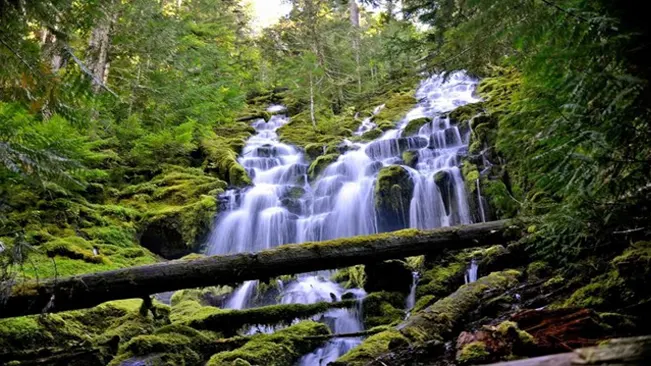
Opal Creek Wilderness
The Opal Creek Wilderness is a pristine natural sanctuary known for its ancient forests and crystal-clear waters. This area is a paradise for hikers and nature lovers, showcasing towering old-growth trees and remnants of an abandoned mining town that add a touch of history to the wilderness experience. The vibrant, translucent waters of Opal Creek meander through this untouched landscape, inviting visitors to explore its serene beauty.

Tamolitch Blue Pool
The Tamolitch Blue Pool is a natural wonder, where the McKenzie River emerges as a stunningly clear and vibrant blue spring after flowing underground. The hike to this mesmerizing pool is rewarding, offering a journey through verdant forests and rugged terrain. The pool’s intense blue color, combined with the serene, untouched surroundings, makes it a magical spot for contemplation and nature appreciation.
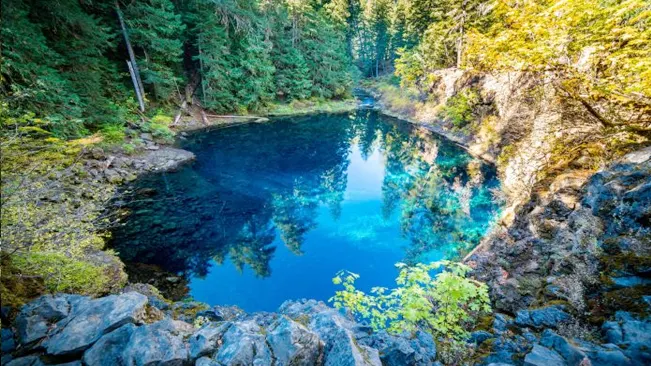
Three Sisters Wilderness
The Three Sisters Wilderness is an adventurer’s dream, boasting a diverse landscape of volcanic peaks, alpine meadows, and glacial lakes. This vast wilderness area offers unparalleled opportunities for backpacking, mountaineering, and soaking in panoramic views. The challenging terrain and breathtaking scenery provide an unforgettable experience for those seeking to explore the rugged beauty of the Cascade Range.
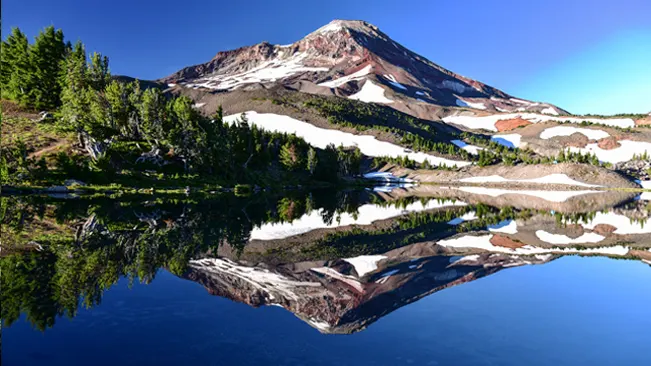
Waldo Lake
Waldo Lake stands out as one of the purest lakes in the world, its crystal-clear waters offering a tranquil haven for canoeing, kayaking, and camping. Surrounded by pristine wilderness, the lake’s serene environment is perfect for those looking to escape the hustle and bustle of daily life and immerse themselves in nature. The clarity of the water and the peacefulness of the surrounding forest make Waldo Lake an idyllic destination.
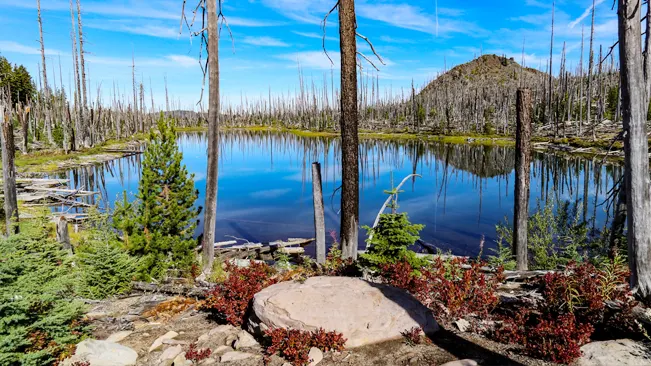
Detroit Lake
Detroit Lake is a bustling hub for water enthusiasts, renowned for its boating, fishing, and water sports opportunities. The lake’s scenic beauty is complemented by well-maintained campgrounds and picnic areas, making it a popular destination for families and outdoor adventurers alike. With its expansive waters and vibrant community atmosphere, Detroit Lake offers a perfect blend of recreational activities and natural beauty.
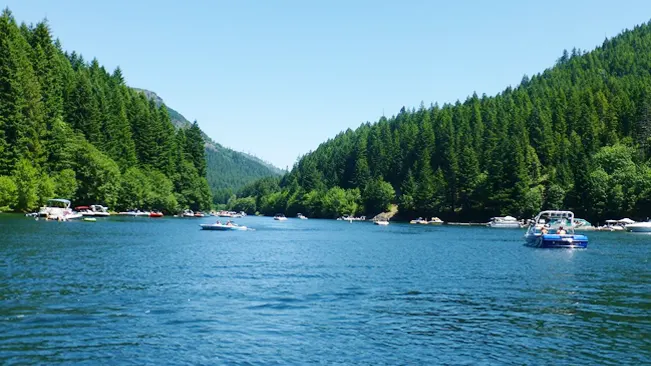
Iron Mountain
Iron Mountain is celebrated for its spectacular wildflower meadows, which burst into a kaleidoscope of colors during the peak bloom period in early summer. A trail leads hikers to the summit, where they are rewarded with a breathtaking panoramic view of the Cascade Range. The mountain’s diverse flora and the changing seasonal landscapes make it a must-visit for botany enthusiasts and those seeking a picturesque hiking experience.
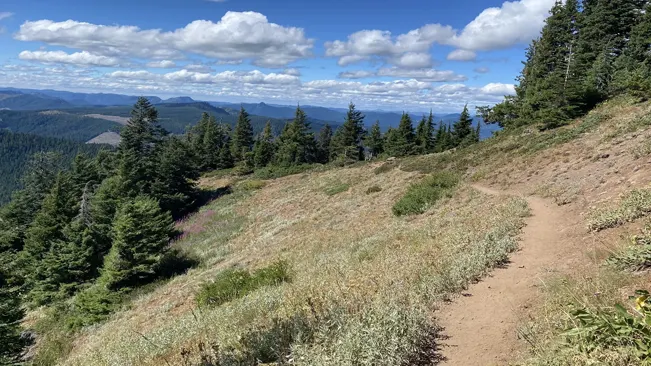
Salt Creek Falls
Salt Creek Falls, Oregon’s second-highest single-drop waterfall, offers an awe-inspiring natural spectacle that is easily accessible to visitors. An observation platform provides a stunning vantage point to view the powerful cascade as it plunges into the canyon below. The falls are a highlight of the region, drawing visitors for their majestic beauty and the peaceful nature of the surrounding forest.
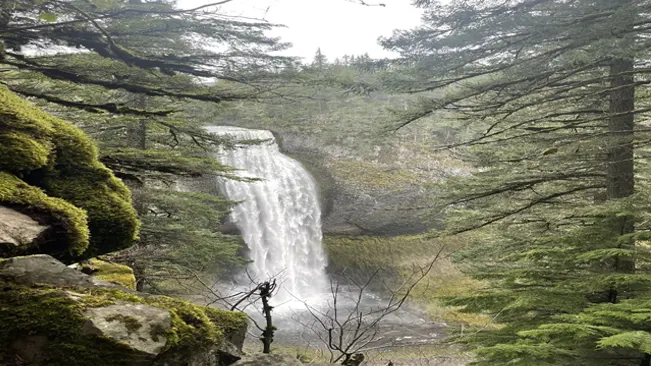
Clear Lake
Clear Lake is renowned for its astonishing clarity and underwater forest, preserved by the lake’s cold temperatures. Ideal for kayaking, scuba diving, and fishing, the lake offers a unique glimpse into a submerged world, where ancient trees stand silently beneath the surface. The exceptional clarity of the water and the serene beauty of the surrounding area make Clear Lake a fascinating destination for water lovers and nature enthusiasts.
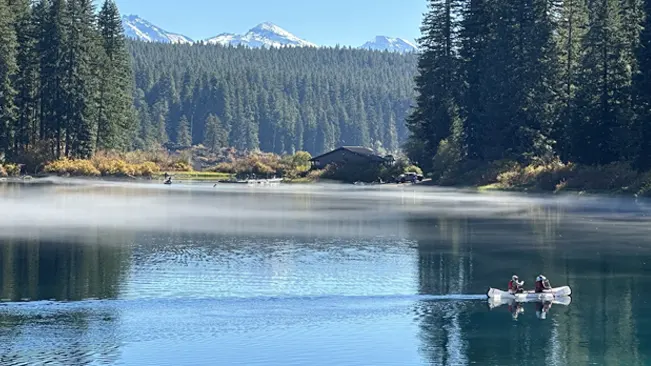
Geography and Ecology
The Willamette National Forest is characterized by its dramatic geographical features, which include the towering peaks of the Cascade Range, such as Mount Jefferson and the Three Sisters, each offering breathtaking vistas and challenging terrain for adventurers. The forest’s landscape is also sculpted by an intricate network of rivers and streams, including the pristine waters of the McKenzie and Santiam Rivers, which carve through deep valleys and support a myriad of ecosystems. These waterways, along with the forest’s numerous lakes and waterfalls, not only add to the scenic beauty but also play a crucial role in the forest’s ecological balance, providing vital habitats and water sources for the area’s wildlife.
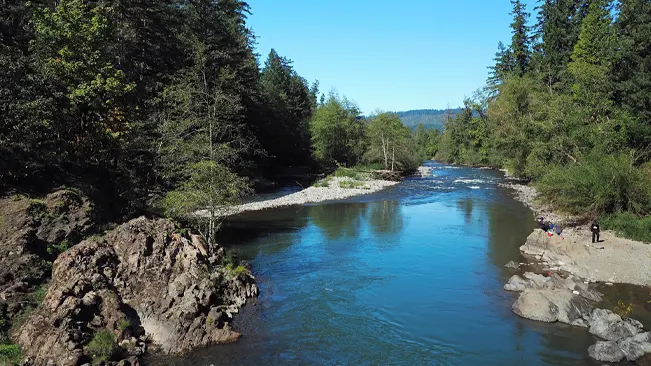
Within its vast expanse, the Willamette National Forest boasts a mosaic of diverse ecosystems, from dense, mossy old-growth forests teeming with ancient Douglas firs and western hemlocks, to alpine meadows bursting with colorful wildflowers in the spring and summer. These ecosystems support an incredible variety of life, adapted to the unique conditions of each habitat. The forest’s lower elevations are dominated by lush, coniferous forests, while its higher elevations transition into subalpine and alpine environments, each hosting specialized communities of plants and animals that contribute to the forest’s rich biodiversity.
Flora and Fauna
Among the key species that call the Willamette National Forest home are the majestic Roosevelt elk and the elusive black bear, which roam the forest’s vast expanses, from its dense underbrush to its open meadows. The forest also serves as a critical habitat for the northern spotted owl, a symbol of conservation efforts in the Pacific Northwest, residing in the ancient, old-growth stands that define much of the forest’s character. These species, among others, are integral to the ecological balance, playing key roles in their respective habitats.
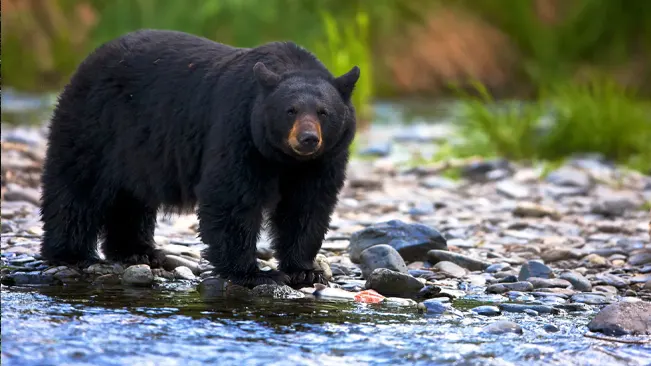
The forest’s flora is equally impressive, with a stunning array of plant life that includes towering old-growth trees like the Douglas fir and western hemlock, which provide canopy cover and habitat for countless species. The understory is a lush layer of ferns, shrubs, and smaller trees, while the forest floor is often carpeted with a diverse array of mosses and fungi, some of which are rare and contribute to the forest’s ecological diversity. The alpine regions burst into a spectacle of wildflowers each spring, attracting pollinators and providing a colorful contrast to the snow-capped peaks. This rich tapestry of plant life not only supports a wide range of wildlife but also contributes to the forest’s role as a major carbon sink, helping to mitigate the effects of climate change.
Recreational Activities in Willamette National Forest
- Hiking and Backpacking: Hiking is a favorite pastime in the Willamette National Forest, offering trails for all abilities. The Pacific Crest Trail and the McKenzie River Trail are standout choices, with the former providing long-distance challenges and the latter showcasing stunning waterfalls and clear blue pools. For newcomers, trails like the Clear Lake Loop are ideal, offering easy paths with breathtaking scenery. Each trail offers a unique journey through the forest’s diverse landscapes, from dense woodlands to alpine vistas.
- Camping Opportunities: The forest boasts a range of camping experiences, from convenient developed campgrounds to remote backcountry sites. Facilities like Ice Cap Campground provide modern comforts amidst the natural beauty, while areas in the Three Sisters Wilderness offer a more rugged, immersive outdoor experience. Camping in the Willamette National Forest is an opportunity to connect with nature, whether you’re seeking a family-friendly site or a solitary retreat in the wilderness.
- Water Activities: With its abundant rivers, lakes, and streams, the forest is a haven for water enthusiasts. Anglers can find ample fishing spots teeming with trout and salmon, particularly in the McKenzie and Santiam Rivers. Kayaking and swimming are popular in the crystal-clear waters of Clear Lake and the mesmerizing Blue Pool, providing refreshing respite and adventure during warmer months.
- Winter Sports: Winter transforms the forest into a playground for snow sports. The Hoodoo Ski Area offers slopes for skiing and snowboarding, catering to all skill levels. For those who prefer a quieter pace, areas like the Santiam Pass are perfect for snowshoeing, offering peaceful trails through snow-laden forests and meadows.
- Special Sections on Unique Activities: Beyond the usual outdoor pursuits, the Willamette National Forest is home to unique attractions like the soothing Terwilliger Hot Springs, where visitors can relax in natural geothermal pools surrounded by forest. Scenic drives, such as the Aufderheide Scenic Byway, offer a leisurely way to explore the forest’s beauty, winding through lush valleys and past cascading rivers, with plenty of stops for photography, picnicking, and simply taking in the views.


Tips and Advice for Visiting Willamette National Forest
- Plan Ahead: Research the specific areas of the forest you wish to explore, including trails, campgrounds, and attractions. Check the current conditions, such as weather forecasts, trail closures, and any restrictions in place.
- Leave No Trace: Practice Leave No Trace principles to minimize your impact on the environment. This includes packing out all trash, staying on designated trails, and respecting wildlife and plant life.
- Be Prepared for the Weather: Weather in the forest can change rapidly, especially in higher elevations. Dress in layers, and bring waterproof gear to be prepared for rain or sudden temperature drops.
- Safety First: Ensure you have a first aid kit, plenty of water, and a map or GPS device. Familiarize yourself with the area, and let someone know your plans, especially if venturing into backcountry areas.
- Wildlife Awareness: Keep a safe distance from wildlife and do not feed animals. Be informed about the wildlife in the area and how to store food properly to avoid attracting bears and other animals.
- Respect Fire Regulations: Check for fire restrictions before your visit. Use established fire rings in campgrounds, and never leave a fire unattended. Ensure all fires are completely extinguished before leaving.
- Pack the Essentials: Bring the ten essentials for outdoor activities, including navigation tools, sun protection, extra food and water, and emergency shelter.
- Leave Early: Popular sites can get crowded, especially on weekends and holidays. Start your day early to find parking and enjoy the tranquility of the forest.
- Stay on Marked Trails: To protect the forest’s fragile ecosystems, stay on marked trails and avoid creating new paths or shortcuts.
- Cultural Respect: Recognize that many areas within the forest have cultural significance to indigenous peoples and other communities. Treat these places with respect and leave archaeological and historical sites undisturbed.
Conclusion
In summary, the Willamette National Forest is a vital natural haven, offering stunning landscapes and a wealth of activities for all who visit. Its role goes beyond recreation, highlighting the importance of conservation in safeguarding its ecosystems for future enjoyment. By embracing responsible visitation practices, we play a part in preserving this precious resource, ensuring it remains a place of beauty and sanctuary for both wildlife and people. The forest serves as a reminder of our collective duty to protect these irreplaceable natural spaces.
FAQS
- What is the best time of year to visit the Willamette National Forest?
The best time to visit depends on your preferred activities. Summer and early fall offer ideal conditions for hiking, camping, and water activities, while winter is perfect for snow sports. - Are there any permits required for activities in the forest?
Certain activities, such as wilderness camping or cutting firewood, may require permits. Check the USDA Forest Service website or local ranger stations for specific permit requirements. - Can I bring my dog to the Willamette National Forest?
Yes, dogs are allowed but must be kept on a leash in developed recreation areas and under control at all times. - Are there any campgrounds with facilities in the forest?
Yes, the forest offers a variety of campgrounds, including those with facilities such as toilets and potable water. Some require reservations, which can be made online. - What kind of wildlife might I see in the forest?
The forest is home to a diverse array of wildlife, including deer, elk, black bears, and a variety of bird species. Always observe wildlife from a safe distance. - Are campfires allowed in the Willamette National Forest?
Campfires are allowed in designated areas, but restrictions may be in place during high fire danger periods. Always check current fire regulations before lighting a fire. - What should I do if I encounter a bear?
If you encounter a bear, do not run. Remain calm, make yourself appear larger, and slowly back away. Store food properly to avoid attracting bears to your campsite. - Can I fish in the lakes and rivers of the forest?
Yes, fishing is a popular activity, but you’ll need an Oregon state fishing license and should familiarize yourself with local regulations and catch limits. - Are there any scenic drives within the Willamette National Forest?
Yes, scenic drives like the McKenzie Pass-Santiam Pass Scenic Byway offer breathtaking views of the forest’s landscapes. Check for seasonal road closures before planning your drive. - How can I contribute to the conservation of the Willamette National Forest?
Visitors can contribute by practicing Leave No Trace principles, participating in volunteer opportunities, and supporting local conservation organizations.


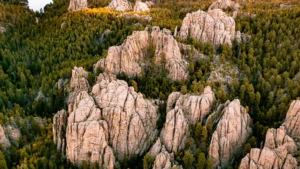

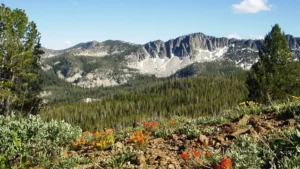
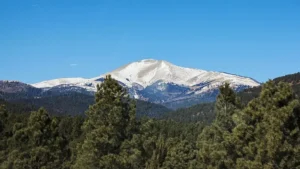


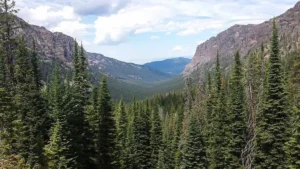
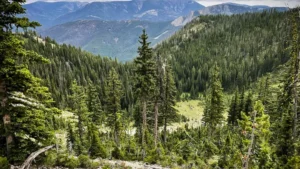
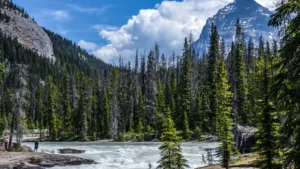
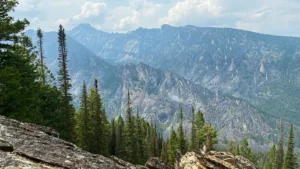
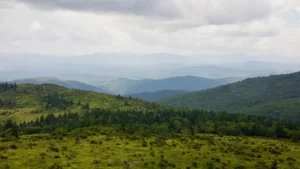

Leave your comment